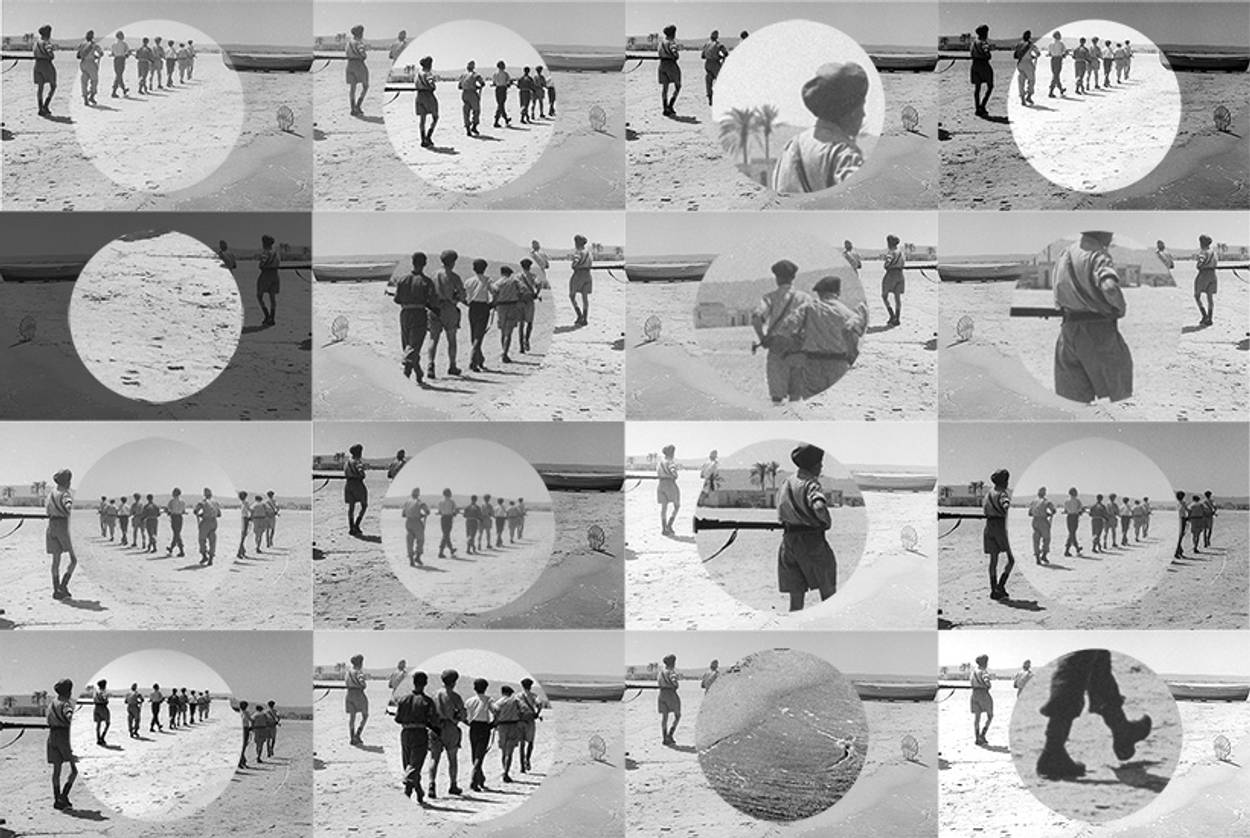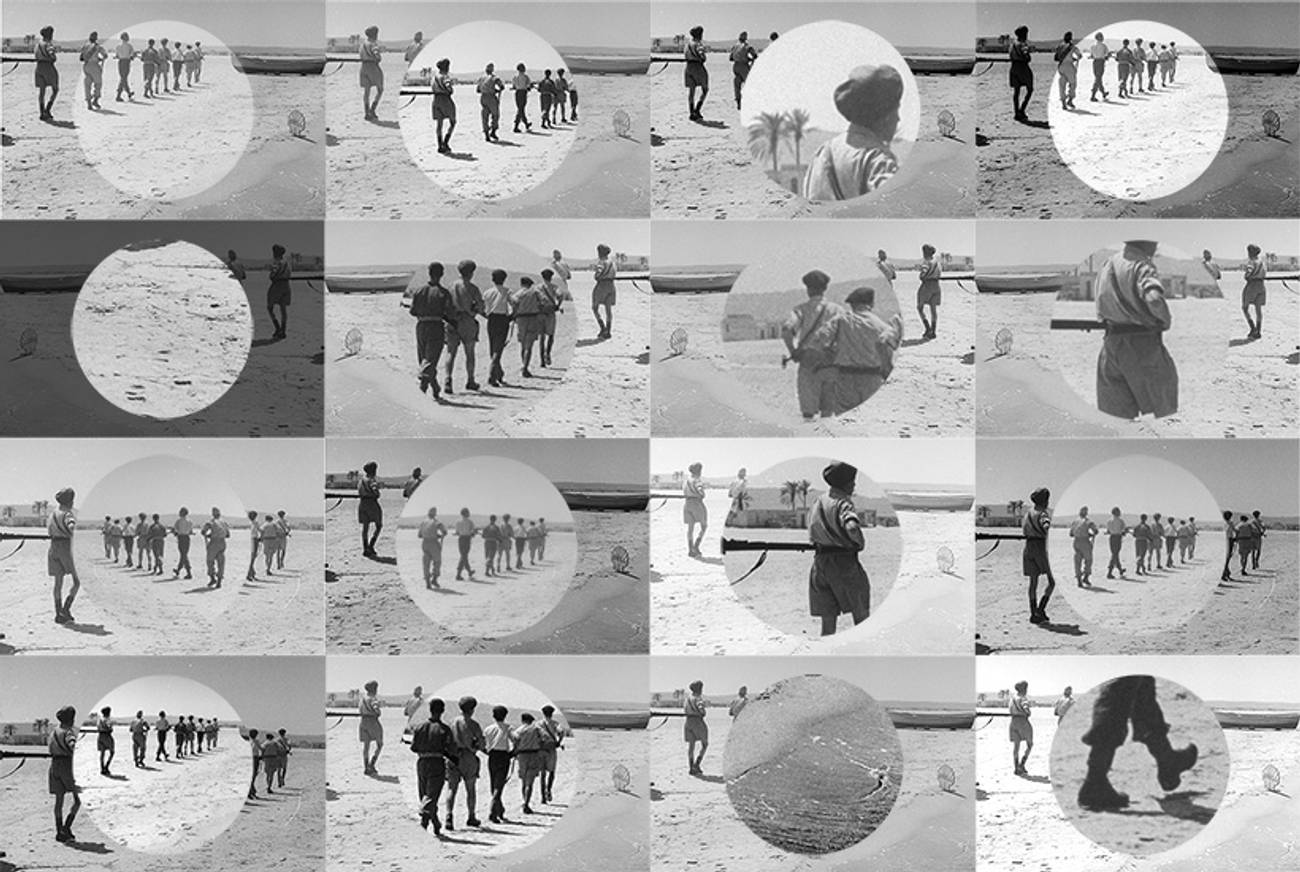In 2000, a Newspaper Headline Opened a Wound in Israeli Society. It Still Hasn’t Healed.
The fight over alleged war crimes from 1948 is a window into the kaleidoscopic nature of history and memory in Israeli culture




This is a preview of an in-depth investigative report. Click here for the full story.
On a breezy day late last summer, just after the Jewish new year, I found myself on the road to Kibbutz Magal, a small community on the Green Line that separates Israel from the West Bank. The radio was playing interviews with hotel managers who supplied luxury suites free of charge to chayalim bodedim—“lonely soldiers” without family in Israel who didn’t have anywhere to spend the holiday weekend. These interviews, held by tearful presenters, were interspersed with a maniacal ad jingle for eyewear—“The craving for glasses!”—that I heard 20 times or more as the hilly central Israeli landscape gave way to the Sharon Plain.
I soon arrived at my destination: the home of Teddy Katz, a 70-year-old kibbutz member and peace activist who played a central role in one of the most fascinating controversies to shake Israel in the past two decades. On Jan. 21, 2000, the weekend edition of the Maariv newspaper fronted a headline that blared “The Massacre in Tantura!” Written by the journalist Amir Gilat, the article purported to describe a war crime cover-up approaching the scale of My Lai. Research carried out by Katz, Gilat wrote, had unveiled “an array of atrocities including the shooting of men in the streets, in their homes and, in a concentrated fashion, in groups of six to 10 at the village cemetery.” In total, the article said, more than 200 non-combatants had been killed during the War of Independence in 1948 by Israeli soldiers from the Alexandroni Brigade, their bodies dumped into mass graves that were eventually covered over by a beachfront parking lot now shared by the seaside resort villages of Kibbutz Dor and Kibbutz Nachsholim. The basis for Gilat’s scoop was a 150-page thesis Katz submitted for a master’s degree at Haifa University in March of 1998, two years before Gilat’s story was published.
Katz spent years seeking out former residents of Tantura in order to corroborate stories that originally appeared in the Palestinian press in the early 1990s. His thesis was awarded a grade of 97—a mark professors say may be the highest the university has ever awarded a thesis. Then it was shelved and forgotten, until Gilat, who was also a student at Haifa University, discovered it—and published its findings as a news story, setting off a public firestorm.
Veterans of the Alexandroni Brigade immediately organized to mount a response to what they argued was an assault on their honor. They sued Katz for libel, claiming 1.1 million shekels, or about $300,000, in damages. During the trial, the veterans’ lawyer exposed multiple errors Katz had made in the thesis. Some were quite egregious, such as including quotes that were not reflected in transcriptions of the taped interviews. Katz’s lawyers never presented a defense at trial, because Katz, who began to suffer an aneurysm during the proceedings, settled—or was pressured to settle, depending on whom you believe—outside of court.
Today Katz remains known throughout Israel as the man who fabricated quotes and admitted to libeling heroes of Israel’s independence. After the trial, Katz—who subsequently suffered a second aneurysm and the stroke that left him disabled—received threats. “People like you bring destruction,” read one postcard, and then, ominously, “You’ll be hearing from us.” For the right, he is an enemy of Zionism, an ideologue bent on smearing the heroes of 1948. In left-wing circles, he has become a cause célèbre—a man perceived as the victim of academic censorship, and the subject of boycott campaigns aimed at Haifa University.
“It’s a typical fight between left and right,” said Uri Avnery, the founder of the peace movement Gush Shalom and a friend of Katz’s. “It’s not so much about what happened in ’48 as what’s happening now. It’s an attack by right-wing people against somebody who is well known as a left-wing activist, and it’s a part of the battle about what happened in ’48, the biggest question in Israeli history: Were the Arabs in ’48 driven out by force or did they flee of their own free will? It’s one of the major debates in Zionist history. And this landed right in the middle of it.”
Read the full story here.
Batya Ungar-Sargon is a freelance writer who lives in New York. Her Twitter feed is @bungarsargon.
Batya Ungar-Sargon is a freelance writer who lives in New York. Her Twitter feed is @bungarsargon.